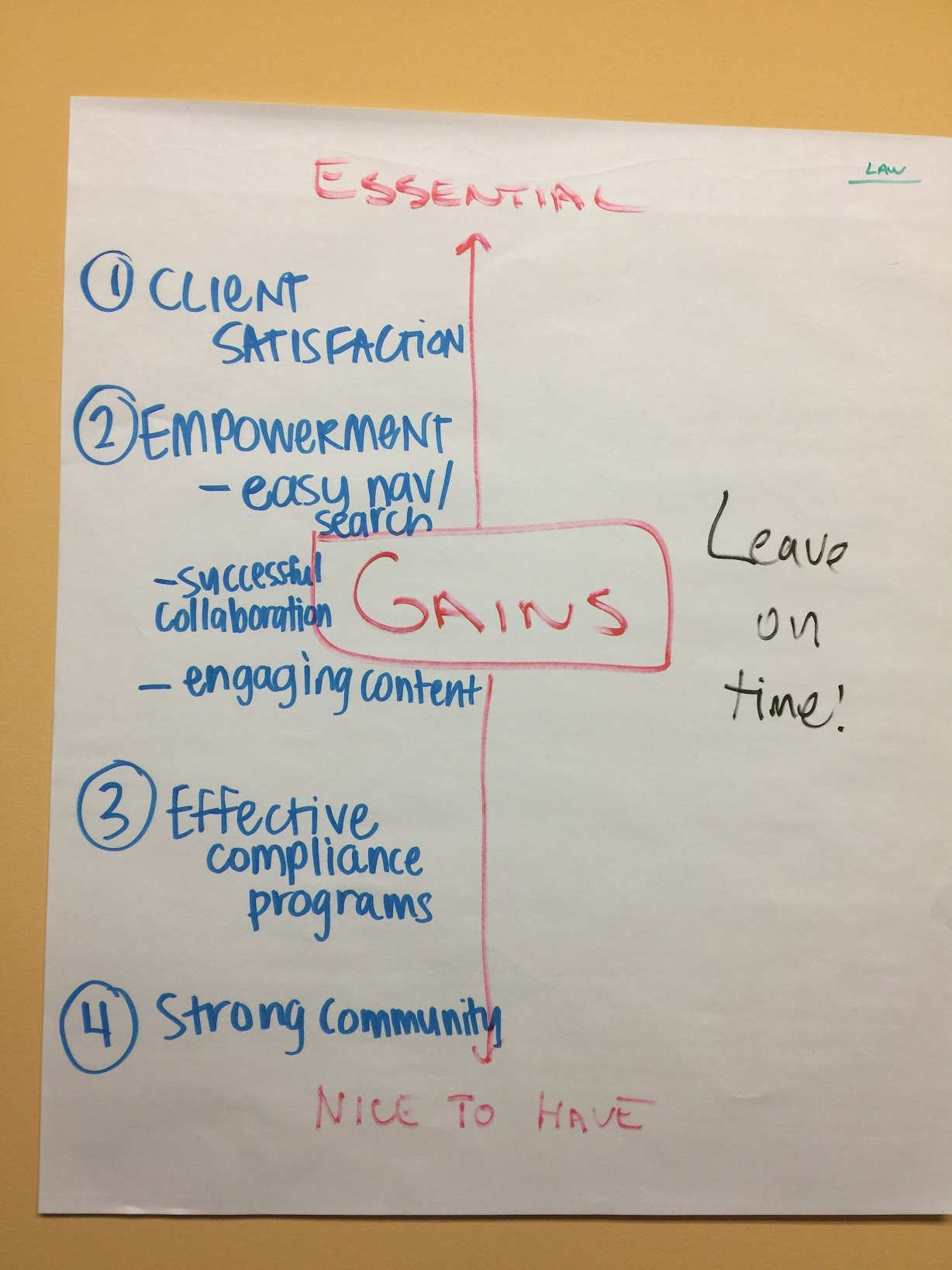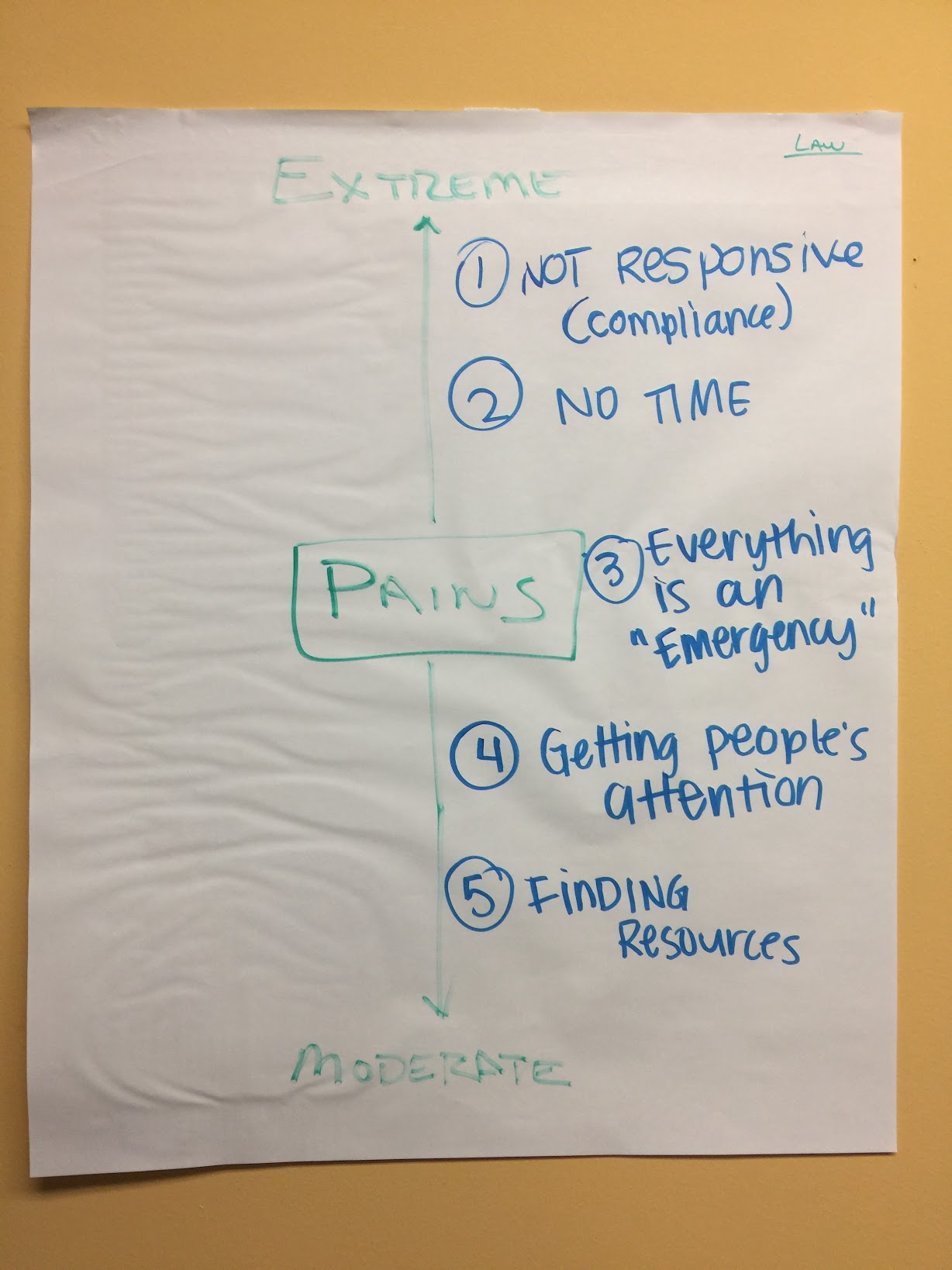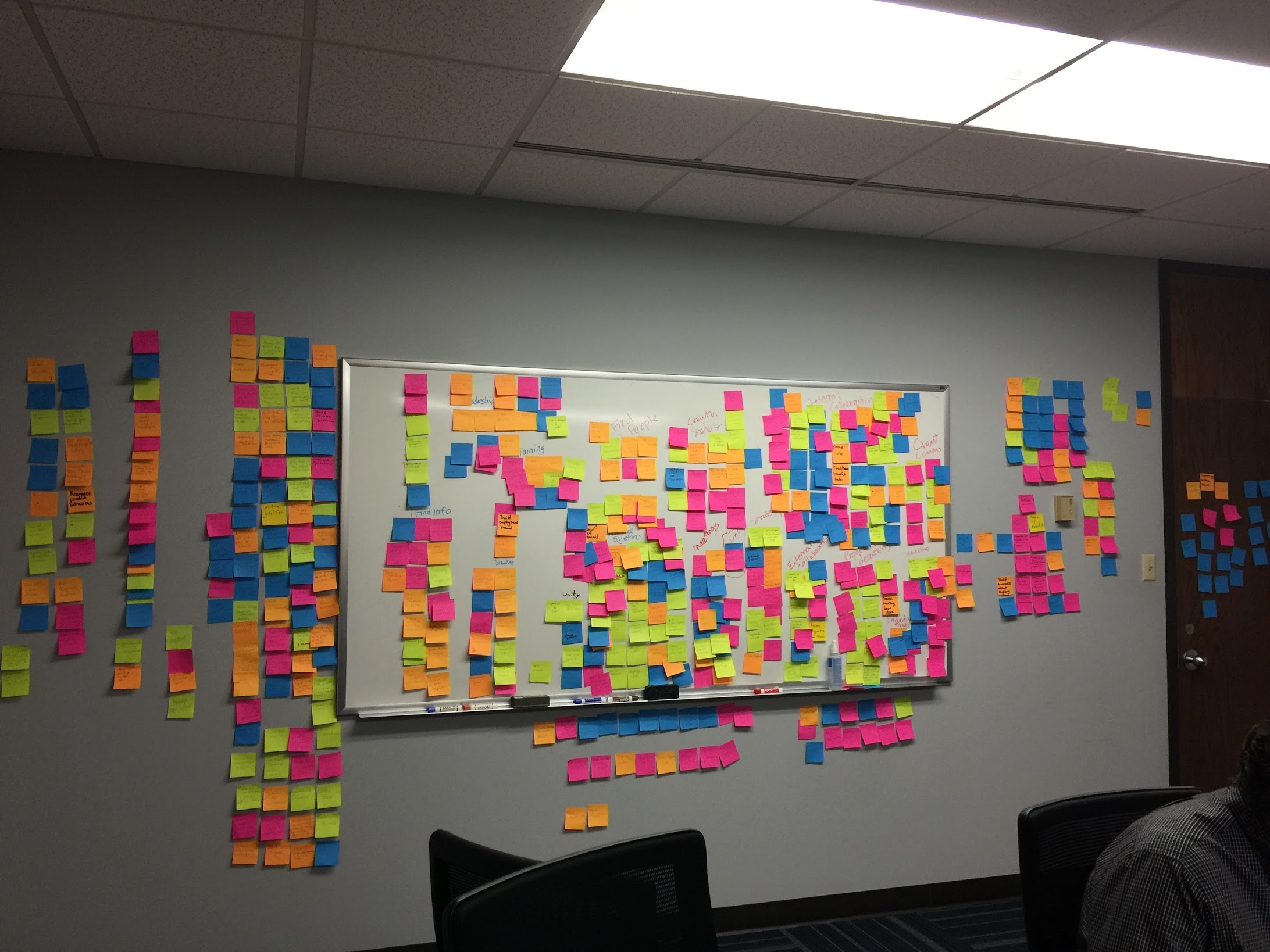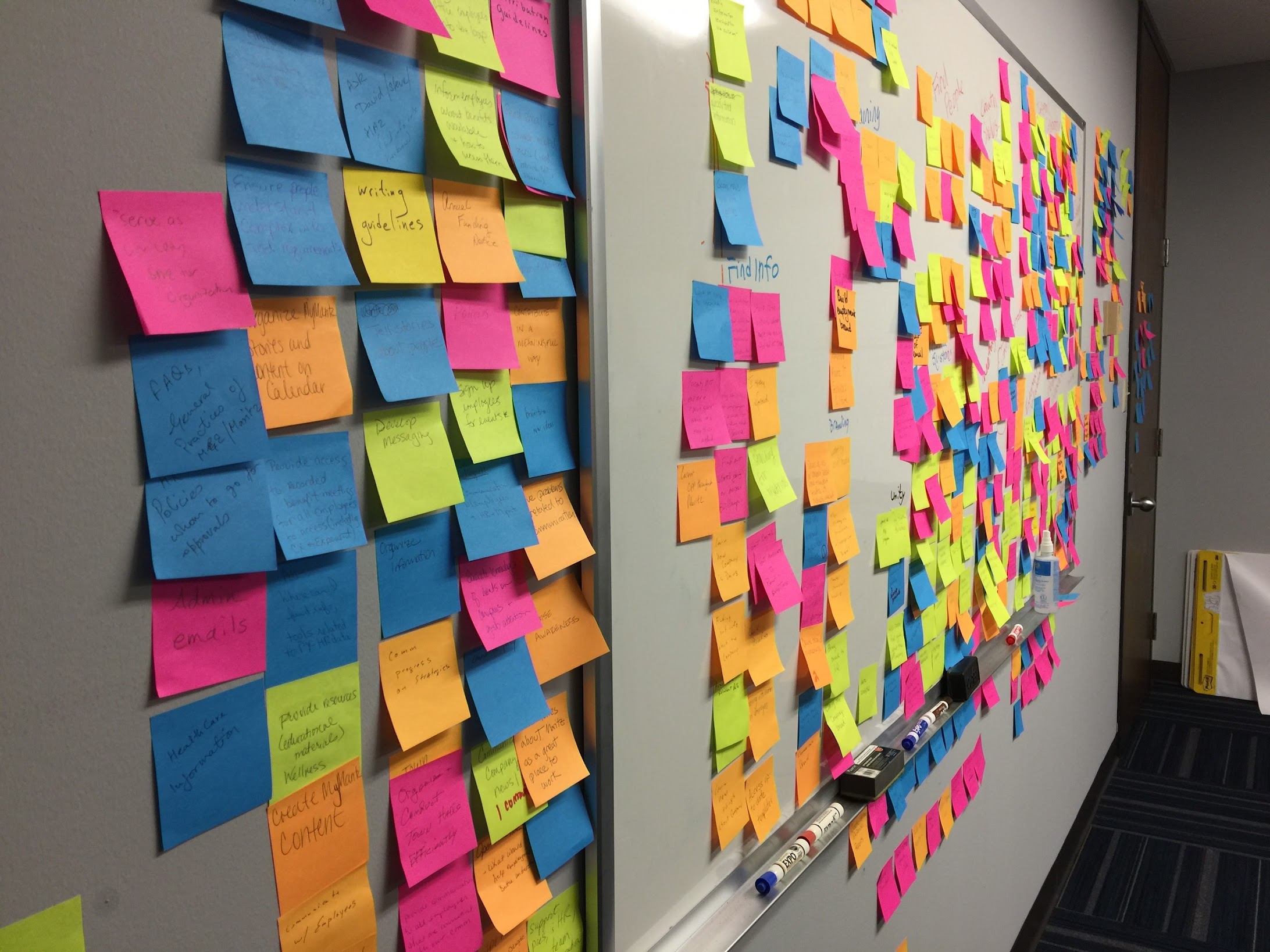Intranet Research
How do you bridge the gap between the people using a thing and the people paying to have the thing built?
Maritz (the parent company) decided to create a new intranet for their family of companies including Maritz Travel, Motivation, and others. I was working at Maritz Motivation at the time but I was leading overall UX maturity, so they asked me to help.
Two Audiences (with Different Needs)
As is often the case, the people paying for something are not always as aware as they should be of the people they want to serve. In order to make sure the money was well spent, I devised a two-pronged research path: let's talk to end users and let's talk to the business. These two research efforts happened at the same time, were synthesized independently, and then we brought the findings together for a final synthesis.
End Users
The first path was to conduct interviews with employees to understand their needs. This research was intentionally open ended so that we could capture as much insight as possible.
In any UX research I start with a simple research plan. This ensures we have enough rigour and have thought through our goals, processes, and intentions. These documents are also valuable in communicating to stakeholders and can be used to secure funding.
I started by writing an interview guide for use by our volunteer researchers. In order to conduct the research in a timely manner, I knew I wouldn't be able to conduct all the interviews myself so I recruited a team of volunteer researchers.
These volunteers did not have any experience conducting field research so I put together a (fun) training workshop for our dozen researchers covering interview techniques and mindset. Armed with the interview guide and some basic interview knowledge we began interviews.
In order to coordinate interview findings, we used a rainbow sheet:

This allowed the team to work independently while giving us a central place to collect and collate our finding.
The Business
The other group who needed to be represented was the group paying for the whole thing. I planned a series of workshops based on the value proposition of a new intranet.
These workshops were conducted with leadership from Maritz various child companies.
Bringing It Together
Because this project had so many stakeholders, we secured a dedicated room. Over the course of several weeks, we covered the walls with sticky notes. This information radiator kept all the stakeholders on the same page and gave us researchers the room to rearrange and remix nuggets of information during synthesis.
Conclusion
What we ended up with were two mental models: one for the end users and one for the business users. We laid these two maps out back-to-back and were able to identify differences in the mental model between these two groups. This led to productive conversations with stakeholders to set expectations about how people will reasonably use a new (or old) intranet.
In the end, the research we did led to a better set of tools that helped the business folks get the most out of their investment.







